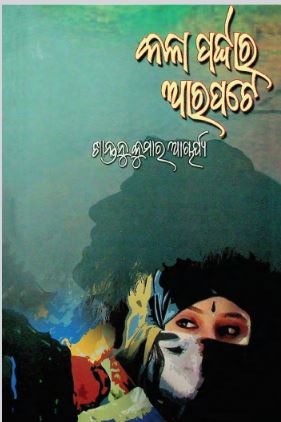In the realm of Odia literature, few authors resonate with the same emotional depth and narrative prowess as Santanu Kumar Acharya. His 2013 publication, “Kala Pardara Arapate,” is a compelling collection of tales that delve into the human experience, exploring themes of love, loss, and the quest for identity. Each story within this anthology is a tapestry woven from the threads of contemporary Odia life, capturing the essence of cultural nuances and the complexities of human relationships.
The title itself, “Kala Pardara Arapate,” can be translated to “On the Black Canvas,” suggesting a backdrop that is rich with dark and profound experiences. The book does not shy away from the challenges and struggles that individuals face in their daily lives. Instead, it embraces these realities, providing readers with a mirror to their own experiences and emotions.
One of the standout aspects of Acharya’s writing is his mastery of characterization. Each story introduces a unique set of characters, ranging from the common man to the more nuanced figures grappling with their internal dilemmas. For instance, in one story, a young woman struggles with societal expectations while chasing her dreams, reflecting the often frustrating intersection of tradition and modernity. In another tale, an elderly man reminisces about his past, revealing the bittersweet nature of nostalgia and the inevitable passage of time.
Acharya’s storytelling is marked by a lyrical quality, drawing readers into a world where every emotion is felt deeply. His prose is both simple and profound, making complex ideas accessible to a wide audience. The use of vivid imagery enhances the storytelling, allowing readers to immerse themselves fully in the scenarios he presents. The landscapes of Odisha, with their rich cultural heritage and scenic beauty, also play a significant role in the narratives, enriching the context and setting.
The sub-stories within “Kala Pardara Arapate” collectively paint a comprehensive picture of contemporary Odia society. Acharya skillfully intertwines personal narratives with broader social commentary, addressing issues such as gender roles, economic challenges, and the quest for self-identity in a rapidly changing world. These stories are not merely fictional narratives; they represent the voices of a generation grappling with tradition and progress.
Furthermore, the book reflects a keen awareness of the socio-political landscape of Odisha. Acharya often weaves local dialects and idiomatic expressions into his narratives, adding authenticity and flavor to the dialogues. This linguistic richness not only honors the cultural backdrop but also enhances the reader’s connection to the characters and their stories.
In conclusion, “Kala Pardara Arapate” by Santanu Kumar Acharya is more than just a compilation of stories; it is a heartfelt exploration of the human condition. Through its rich characters and poignant themes, the book offers readers a reflective lens through which to examine their own lives and the society around them. As we turn the pages of this remarkable anthology, we are reminded of the power of storytelling to connect us, inspire us, and sometimes even challenge us to see the world from a different perspective. For those seeking to delve into the beauty of Odia literature, Acharya’s work is an essential addition to their collection.
Books Info
| Books name | Kala Pardara Arapate/କଳା ପର୍ଦ୍ଦାର ଆରପଟେ |
| Editor | Santanu Kumar Acharya |
| No Of pages | 172 |
| Publisher | Prachi Sahitya Pratisthana |
| Publication | 2013 |
| Printed At | Sangita Printers |
| Distributor | NA |

